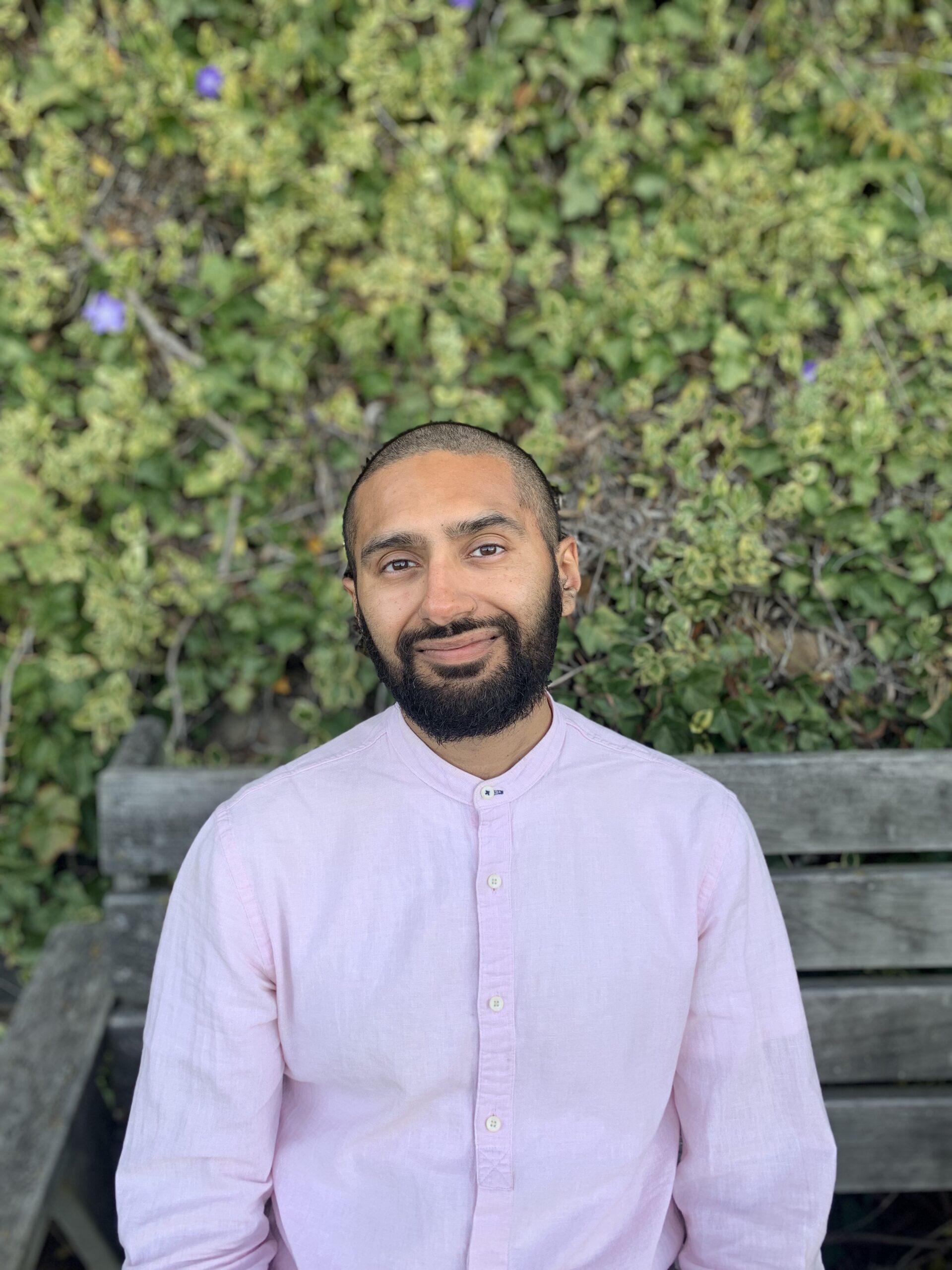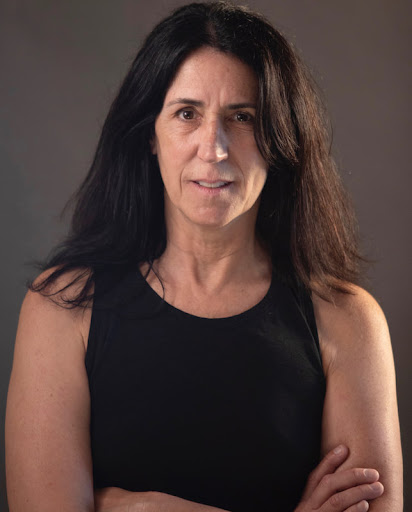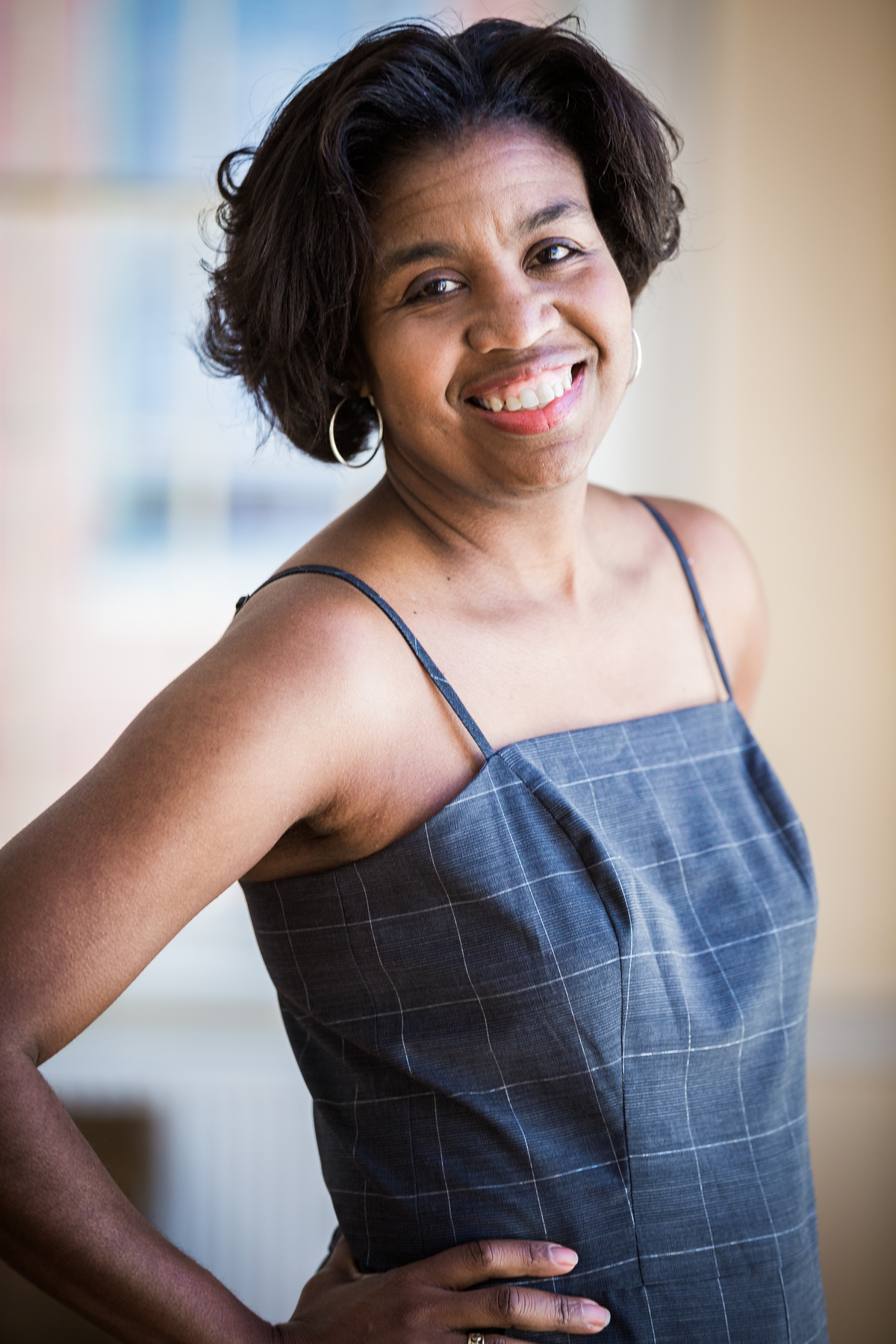MELODY NIXON interviews ELLIS AVERY
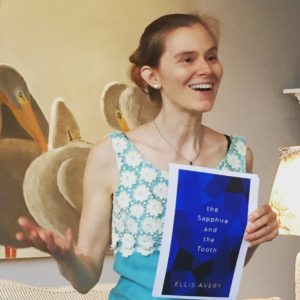
Ellis Avery is an accomplished author, editor, and teacher. Her first novel, The Teahouse Fire, won a Lambda Literary Award for Lesbian Debut Fiction, a Stonewall Book Award, and an Ohioana Library Award. Her second novel, The Last Nude, also won a Stonewall Award. Avery edits the Public Streets column at Public Books, and writes daily haiku poems on Twitter—a year’s selection of which have been recently published as her first volume of poetry, Broken Rooms.
Previously a creative writing teacher at the University of California at Berkeley, Avery now teaches in the Undergraduate Creative Writing department at Columbia University, where Melody Nixon met her in 2011. Nixon was impressed by Avery’s resilience and tenacity as she continued to teach while battling Reiter’s syndrome, an autoimmune condition that sometimes caused her to come to class in a mobility scooter.
Avery’s most recent book, The Family Tooth, is a memoir about grief and illness and the role of food in easing both. Nixon and Avery talked this winter by email, as Nixon wrote at a residency in southern Germany and Avery prepared for another busy semester teaching in NYC.
Melody Nixon (MN): You live in Manhattan, New York City, the most chaotic and populous of North American neighborhoods. Where do you write? Can you describe the environment around you?
Ellis Avery (EA): I live with my partner Sharon in a one-bedroom apartment in a converted warehouse in the West Village. I wrote The Family Tooth on the couch in our living room, a big space with bright morning light, a fireplace, and a view of the old townhouses and sycamores on Hudson Street.
There’s constant car traffic down Hudson, but it’s not a very crowded block, except for once a year, when the Pride March comes clamoring down Christopher Street right outside my window: I’ve got ringside seats!
MN: Where else have you written? Do any difficult or elucidating places stand out?
EA: For a short time I was actually able to afford my own writing studio three blocks up the street, but after the events I discuss in The Family Tooth—getting a rare cancer from my arthritis drugs, seeing my autoimmune condition come roaring back with a vengeance—everything changed. The money from my novels dried up, and I couldn’t focus on commercially viable fiction. Insurance doesn’t pay for acupuncture, so my expenses skyrocketed, and eventually my autoimmune condition made it too physically challenging to go to the studio, so Sharon and I let it go. But I have painfully happy memories of the few months when I was able to use the studio: I would write on a couch looking down through the branches of an ash tree at the intricate terracotta detailing on the old Liberty Moving and Storage building.
Maybe that studio was too good to be true. The other places I’ve gotten lots of writing down have been less pleasant: a walk-in closet with a window I called The Troll Hole in an apartment on St. Mark’s Place, where I lived for nine years. Dark, damp rooms in Paris, Kyoto, and at Yaddo. Those places make me think of the basement writing cell Stanley Kunitz describes in “The Round,” his magnificent ode to the balance we strike between living and writing.
But I can think of two exceptions to the damp, dark rule: a hotel room in Italy overlooking the hill town of Assisi where I started my first novel under the tutelage of Maxine Hong Kingston. Bliss! And a room in Vermont Studio Center where when I turned my desk around, suddenly I could see a mountain: I began my second novel at that desk.
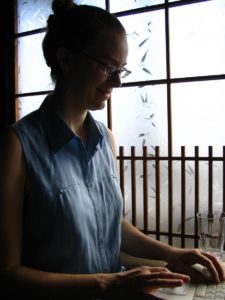
MN: Your essay “On Fear,” released in 2015 as part two of three essays selected for Amazon’s Kindle Singles program, traces your journey from a Reiter’s syndrome/reactive arthritis diagnosis to a diagnosis, three years later, of a rare cancer caused by the drugs used to treat the arthritis. What was your single biggest fear following that diagnosis?
EA: Reiter’s syndrome, also known as reactive arthritis, is an autoimmune disorder that strikes the joints, the eyes, and the urinary tract. The med school mnemonic is “Can’t see, can’t pee, can’t climb a tree.” After years of crippling little injuries that seemed to take forever to heal, culminating in stress fractures in both feet, I was diagnosed in 2009 and put on a drug called Humira.
In 2012, just months after my mother’s death, I was diagnosed with leiomyosarcoma, a rare uterine cancer. I was told to stop taking Humira and given a hysterectomy and a 26 percent chance of five-year survival. When I read the research on leiomyosarcoma, I learned that chemo and radiation don’t change that 26 percent figure, so I decided to spend what might be my last months without them.
Right after the hysterectomy, a baseline CT scan showed no tumor. (Folks in the cancer game, I learned, use “tumor” as a noncount noun.) Subsequently, every clear scan, I was told, would increase the chances that my next scan would be clear. If I was right that going off Humira might be enough to keep the cancer at bay, my first CT scan three months later would show no tumor, and I would probably live. If I was wrong, the scan would show tumor, and I would probably die. (For the past three years since going off Humira, all my cancer scans have shown no evidence of disease, so it looks like I was right.)
To answer your question, during the period that “On Fear” covers, my greatest immediate fear was that there would be tumor on the scan. The fear behind the tumor-on-the-scan fear was composed of equal parts fear of dying of cancer, fear of dying of cancer treatment, and fear of living a long and painful life brutally compromised by unnecessary cancer treatment. On top of that, when I wasn’t fearing for my life, I was tormented by vivid fantasies/memories of my mother, quite recently and suddenly dead, berating me for being self-dramatizing.
MN: In The Family Tooth you touch on how your body—and movement—was severely restricted by both illnesses. Could you still write during these periods? How did you adapt your environment to cope?
EA: I remain partially crippled by Reiter’s syndrome/reactive arthritis, which came back worse than ever after I went off Humira. At first my eyes flared up frequently: without steroid drops, I would be blind today. More slowly and insidiously, the arthritis began to attack my joints: I began using a mobility scooter and, when necessary, wearing a walking cast. Hewing to a ruthlessly clean diet helps keep the worst of the pain away, and I’ve become very efficient at making the handful of dishes that don’t make the arthritis flare up in my joints and eyes, but that in itself is a restriction. I can write—that’s how I wrote The Family Tooth—but right now my creative energy is more tied up in getting better than it is in writing fiction.
MN: Following the first illness you experienced a seismic change: from able-bodiedness to differently abled personhood. How did this physical change, and change in your identity, interact with your identity as a writer?
EA: To the above comments I would add that using a mobility scooter is challenging, but to be honest, having to cook all of one’s own food is challenging, too. Between the food and the scooter, I don’t honestly know if I’ll ever get to write in Kyoto, or Yaddo, or any of those beautiful places I listed again. Although writing is something you can do anywhere, the social forms of writerhood—residencies, speaking engagements, conferences, and book parties—are organized more than you might think around the assumptions that we can all carry on a conversation while standing and eat whatever’s put in front of us. I would certainly feel more “writerly” if those events were easier for me to attend than they are, but it helps to remind myself that writers all over the world do without them.
MN: Your writing in “On Fear” is particularly lucid and straightforward. The voice strikes me as very different to that of your poet’s voice, which is also lucid, but more ambiguous and suggestive. There’s an element of plot-related urgency in “On Fear” too, which keeps the pages turning. Interestingly, Maxine Hong Kingston states that you use your “novelist’s powers” to tell the story in The Family Tooth—while Michelle Tea says you capture the drama of the story with “elegance and poetry.” In so far as these genre categories hold, does this feel primarily like a work of nonfiction to you?
EA: As far as fiction and poetry go, I have published two historical novels with Riverhead, and I’ve been writing a haiku a day for the past 16 years. In my very young adulthood, like many solipsistic, autobiographically-inclined MFA students, I scorned the privilege that had insulated me from a dramatic, novel-shaped life, but in my mid-to-late twenties, this lovely developmental thing happened in my brain where finally other people became interesting to me, and I blossomed as a non-autobiographical novelist. I had finally wised up enough to be grateful that I had thus far had a mercifully placid un-novel-shaped life. If the lives of my heroines were novel-shaped, my own life was perhaps more collection-of-daily-haiku-shaped.
As for The Family Tooth, it’s a memoir of grief, cancer, and becoming disabled, experiences that if nothing else certainly make one feel like one’s living a novel-shaped life. The Family Tooth may make conscious use of images, unlikely juxtapositions, and the sonic properties of language in order to maximize impact, the way that poetry does; it may use techniques of suspense, characterization, and dramatic structure the way that fiction does. But insomuch as any subjective experience can be described as a true story, it is a work of nonfiction.
MN: Can you talk about the decision to write this particular story as nonfiction, rather than as poetry or fiction?
EA: When I began this book, I was living under the anvil of a 26 percent chance of five-year survival. Given the time pressure I felt myself under, I lacked the clarifying distance from which I prefer to write fiction, and it was not clear whether I’d be around long enough to gain it. Moreover, given my urgent need to warn other users of drugs like Humira, it seemed counterproductive to use the multivalent language of poetry.
MN: The essay was released as a Kindle Single. To what extent did you factor the potentially new audience of Kindle readers in to your writing style?
EA: Not at all. Kindle readers are not a homogenous group. I figured that most people, whether they encountered my piece on paper or on a screen, would avoid a personal essay about an uncomfortable subject, but I knew in my bones that a small but significant subset would read it thirstily, because this was the essay I had needed to read when I was most afraid.
I’m proud that “On Fear” has reached thousands of Kindle readers, and I’m hopeful that people with my rare health conditions find in it something useful for their own research.
MN: I’m struck by the risks you take during your process towards healing. You refused allopathic treatments for your rare cancer because there was no proof that those treatments had any efficacy. You link the growth of your cancer with your mourning for your mother, bringing in an element of psychology—and perhaps spirituality—to conventional medicine that, not surprisingly, your oncologist dismissed. It strikes me that throughout the process of treatment you must have wrestled with faith: faith in yourself, in your rational judgments based on your research, and in your intuitive reasoning. How important is faith in the process of healing?
EA: Refusing treatment after carefully evaluating the grim research on leiomyosarcoma was a relatively easy choice to make for two reasons. One, my partner read the research with me and backed me up 100 percent. And two, just a week after my mother’s death in 2011, my friend Cheryl had died at the age of 38, not of cancer but of complications related to her cancer treatment: like I said, I was probably just as afraid of treatment as I was of cancer. So I don’t know if that decision required an extraordinary degree of faith in myself.
The far more difficult task was living with the decision I had made, day after day, until that first clear scan. Doing so required that I find a place of profound surrender. With or without treatment, if I was wrong about Humira, I would probably die, and I had to find the small part of myself that did not flinch from that fate, where I could feel gratitude for the life I’d had thus far, and for whatever time, long or short, remained. I found it reassuring to imagine my ashes scattered on the Hudson River or buried under a tree, to imagine becoming that river or tree. When I did that, the worst-case scenario didn’t seem so bad. That said, the other 95 percent of my spiritual energy went towards visualizing my body killing cancer cells with each breath. I don’t know if I believed I was actually killing cancer cells, but I knew it couldn’t hurt. Was that faith, visualizing either killing cancer cells or my ashes being reincorporated back into this beloved world? I don’t know, but it felt urgently important to give my mind something to do besides be afraid.
MN: Your scans have been clear of tumors for three years now. How does faith continue to factor in to your life?
EA: As I tackle this arthritis challenge, once again, I like to give my mind something better to do than give in to hopelessness. Learning aboutautoimmune inflammation and researching the safest treatments possible, both by reading and by rigorously experimenting on myself, gives me hope that maybe one day I’ll walk more normally again, and be able to eat a wider range of foods without triggering a flare. The difference between hopelessness and hope, I’ve learned, is the difference between mere survival and truly living. Is this faith, a set of better things to do with one’s mind than despair? If it is, it’s vitally important to me.
MN: How about in writing?
EA: I’m more of a practice-based writer than a faith-based one. I mean this in the sense that Christianity is a faith-based religion and Judaism is a practice-based one. Usually, I don’t write because I believe I have something urgent to say, I discover I have something to say because of the urgency with which it wells up when I write. It’s good to believe that the project you’re working on is worth writing and reading, that it can be written, and that one day it will be read. But what seems even more important is the actual act of making the time to write and spending that time writing.
I went through a period last fall where I all but stopped writing in my journal, and when I did, I spent the whole time justifying the pleasure I took in doing so. I had this mean imaginary biographer looking over my shoulder in disappointment, castigating me for my little life and my boring journal, and I usually spent the whole journal entry telling the biographer to leave me alone. This New Year’s resolution was to write more in my journal, and now that I’m writing five days a week, I don’t bother justifying it to myself—I just do it. The biographer is gone.
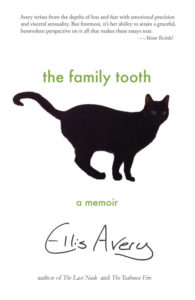
MN: Near the end of “On Fear” you list the successes that have led you to feel satisfied with your life, to feel you had lived “exactly the life I had hoped for.” The first of these accomplishments is writing and publishing two novels, and receiving letters of appreciation for them. Is writing, then, what gives your life most meaning?
EA: Up until the age of 38, when my mother died, I would have said an emphatic yes, writing is what gives my life meaning, together with loving and being loved. Life felt like a game where I traded my youth for books I could point to proudly. Maybe I’ll feel that way again one day, either when I’m better or when I’ve made my peace with not getting better.
But for now, my brush with mortality—my mother’s and my own—and my subsequent confrontation with chronic pain and disability has made me feel less self-important about my writing, less product-driven and more process-oriented. The fiction I’m working on, I’m doing for pleasure, not out of a need to prove myself to the world (or to the imaginary biographer, who is probably my mother) as a novelist.
I still write daily haiku: I think keeping my senses open to each day’s unique flash of beauty and humor—and finding the words with which to share it—is what gives my life most meaning. That, and love. To be honest, it feels like I’m playing a different game right now, one where life gets increasingly difficult, but if you can find something to be grateful for all the way to the end, you win. By those rules, I’m batting a thousand.
*
Ellis Avery is the author of the memoir The Family Tooth, released by Seventeen Reasons in November 2015, and the editor of the Public Books’ Public Streets column.
*
Melody Nixon, a New Zealand-born writer living in New York City and Stuttgart, Germany, is the Interviews Editor for The Common.
*
Photo credits: Headshot by CD Clifford; Image of Ellis Avery writing in Kyoto by Sharon Marcus; Hudson Street between Grove Street and Christopher Street by BlastOButter42, Creative Commons.
